Arborist Fred Breglia said the tree has the potential to be named largest of its species in the U.S.
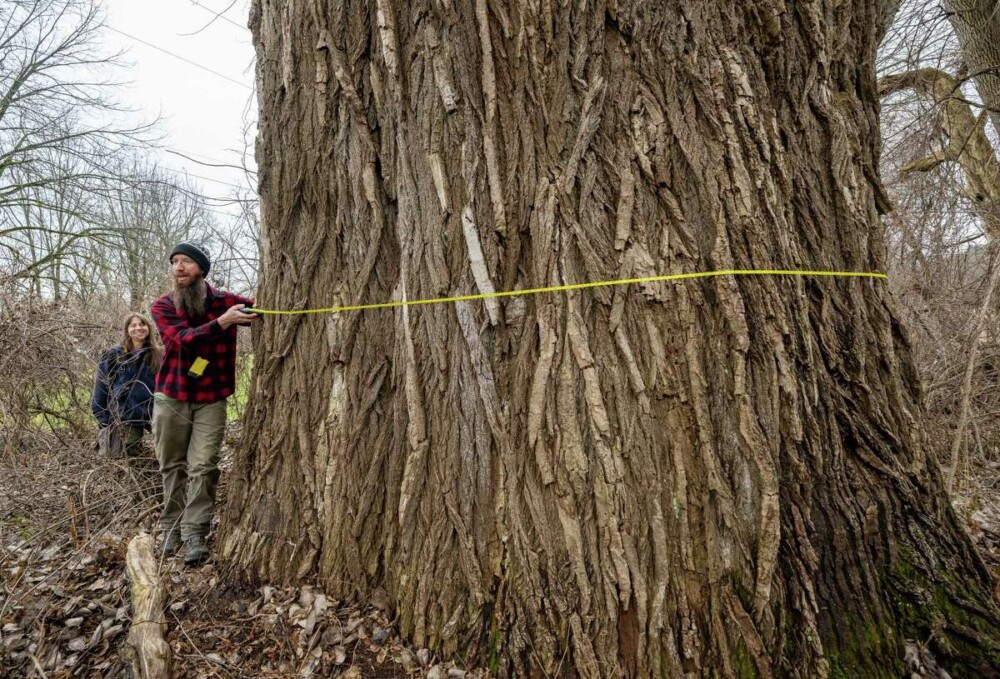
SCHAGHTICOKE — In the rural outskirts of Rensselaer County, an enormous eastern cottonwood rests in a floodplain, outstretching its branches toward the Hudson River and blending into the surrounding canopy of trees.
Those who drive past might not notice it, but for arborist Fred Breglia, the town’s primeval tree is a dream come true. The forester said it is the biggest documented tree in the state of New York and has the potential to be crowned the largest of its species in the world.
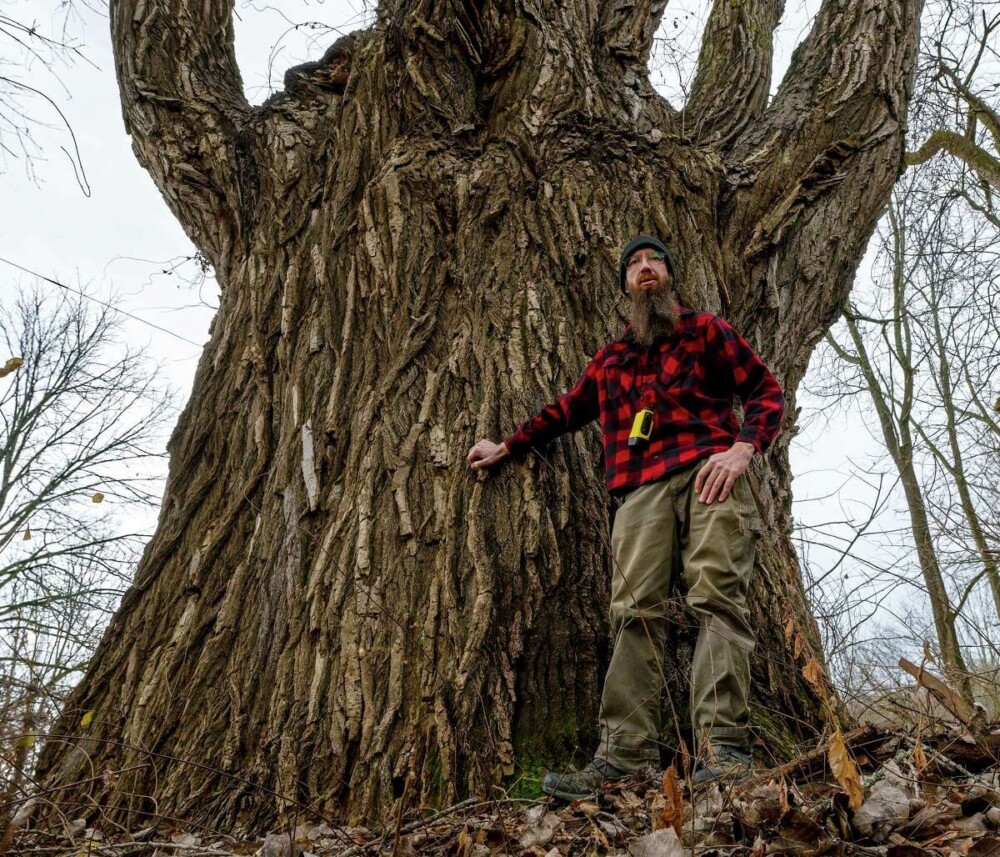
“I would call it a relic,” he said while measuring its 34-foot circumference.
Breglia, executive director of the Landis Arboretum, has devoted most of his life to cataloging majestic trees for the statewide register. While other trees might stand taller or spread their branches farther, Breglia said this tree is the state champion due to the record-breaking point total it received from measuring guidelines delineated by American Forests, a nonprofit conservation organization, that considers circumference, height and size of “crown” or leafy cover overhead.
As he and his wife determined with a laser tree measurement tool, the tree stands roughly 108 feet tall, extending its branches of winter buds into the sky. He estimates it to be between 200 to 300 years old, but closer to the latter — a testament to its strength as it’s a fast-growing but short-lived species that typically only survives 70 to 100 years on average.
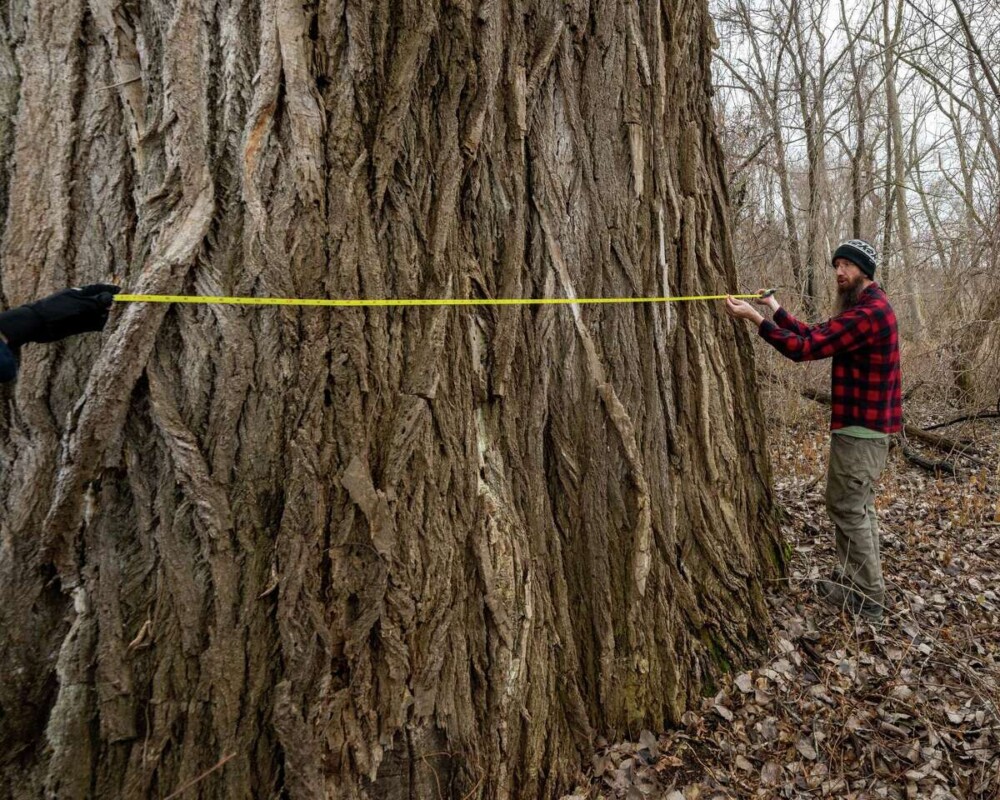
“It’s not just the biggest cottonwood in New York, it’s actually just the biggest tree, regardless of species, in the state because if you compare it with any other trunk and any other species there’s nothing coming up with this point total,” Breglia said, clarifying that all the measurements need to be verified before it officially secures the sought-after title.
Some larger limbs in its over 100-foot-wide canopy spread have been lost to time and worn by weather, but despite its old age, the tree is still alive and surprisingly healthy, the forester said.
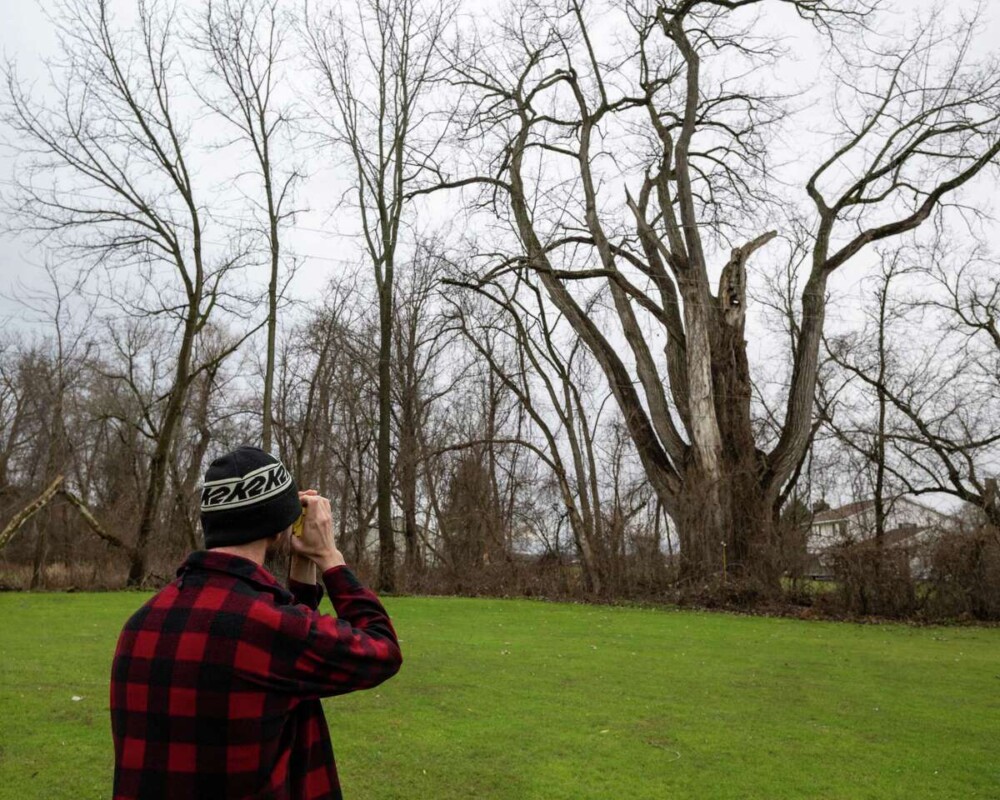
Breglia plans on confirming the age of the rarity by drilling into it and pulling out a plug of its interior to count its rings. But since there isn’t a drill big enough to pierce through the entirety of the trunk, he will have to get permission from landowners to climb it and drill into one of its original branches.
In performing these botanical escapades, Breglia reminisces about his early 𝘤𝘩𝘪𝘭𝘥hood in Richmondville where he was told stories of a nearby oak tree large enough for his entire family to wrap their arms around without touching each other. At the age of 5, when his mother finally brought him to the site of the tale, the old tree left a profound impression on him and set him forth on a lifetime of forestry studies.
He commenced on his mission to identify the state’s biggest tree in 1999 and, along the way, has emerged an unsung leader of a group of enthusiasts around the world looking to connect and learn more about the world’s most majestic of trees. His Facebook group, Big Tree Seekers, has garnered more than 192,000 members nationwide.
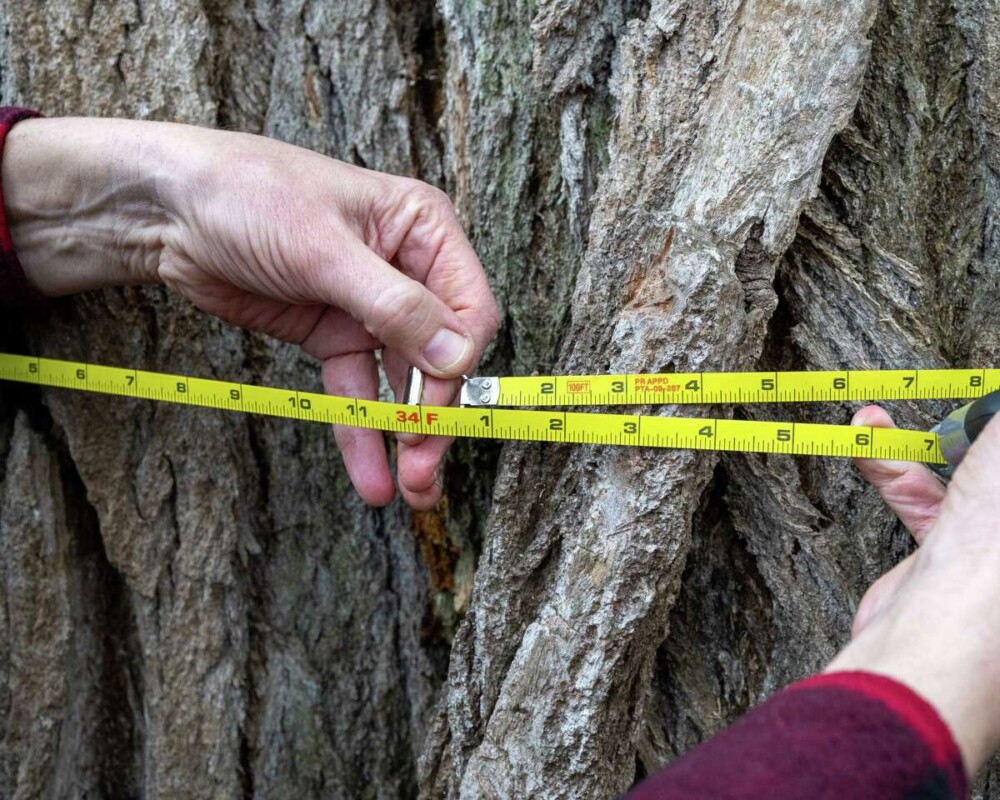
It’s a community full of passionate hobbyists, professional arborists and, most of all, competitive spirit — with many keeping careful watch as current champion trees grow older and bigger and face a growing risk of falling. When a crown holder does topple over, the door opens for new trees (and tree seekers) to get their moment in the spotlight.
But for Breglia, the main motivation is to raise awareness of the ecological importance of protecting old growth forests, which make up less than 1 percent of the world’s forests and less than 3 percent of forests in the U.S.
In 2007, Breglia helped to pass the Bruce Kershner Heritage Tree Preservation and Protection Act — named after the late author and environmentalist from western New York — which puts old growth forests in the state Nature and Historical Preserve category, protecting them from being harvested as timber.
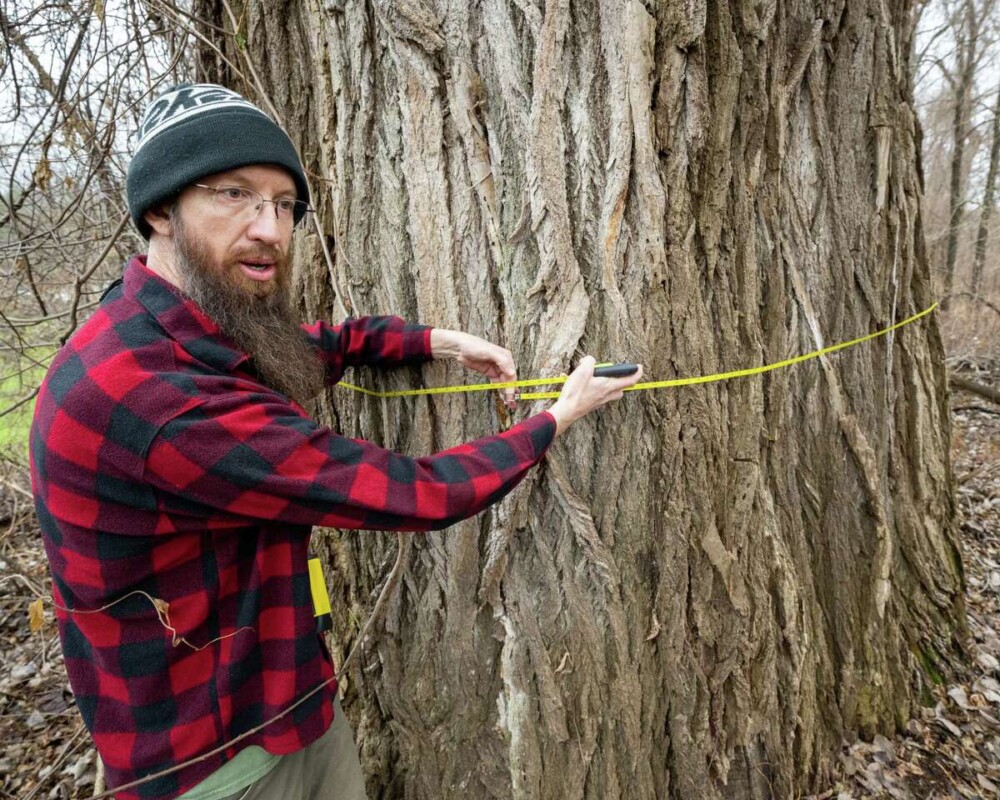
But because this contending tree, as well as many other state champions, is located on private property, it’s not protected under the law. Breglia said he hopes to work on amending the bill to extend to trees like the Schaghticoke eastern cottonwood, but until then, he hopes its grandeur and antiquity is enough to keep landowners from demolishing it.
After finding the state’s second largest tree in Coeymans (also a cottonwood) just months ago, Breglia said the discovery heralds to others that there might just be another out there that’s larger, sitting tall and wide and waiting to be discovered by a curious big tree seeker. To encourage the quest for bigger and better, the Landis Arboretum will host a Big Tree Hunt this spring, which will award a cash bounty to the individual who locates the biggest tree in New York.
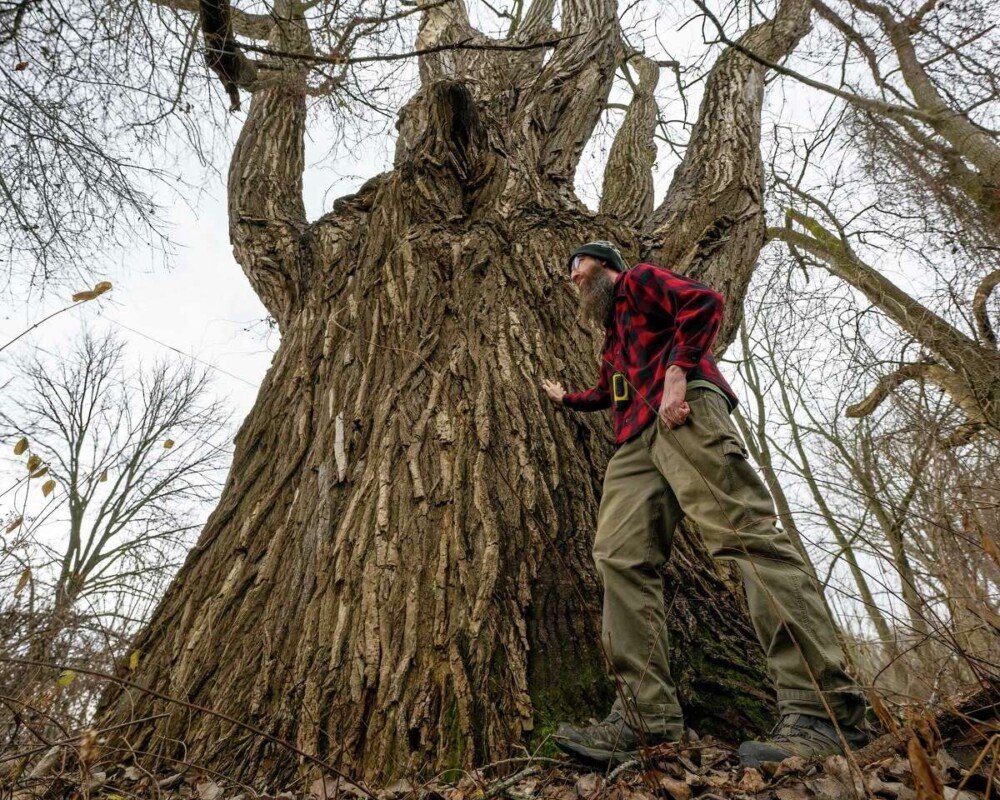
The Rensselaer County tree, sitting humbly in its floodplain on the border of four separate private properties, is the one to beat. And in the upcoming months, if it is crowned the largest eastern cottonwood in the country, Breglia said it will likely win largest of its kind in the world since the species known scientifically as Populus deltoides grows best in northeastern North America.
For the passionate arborist, it would be a victory emblematic of a lifetime spent off the beaten path, seeking out vestiges of the past among the towering treescapes.
“I think it’s really important to document these old trees because people just have no clue,” Breglia said. “It’s about preserving the past for the future.”





